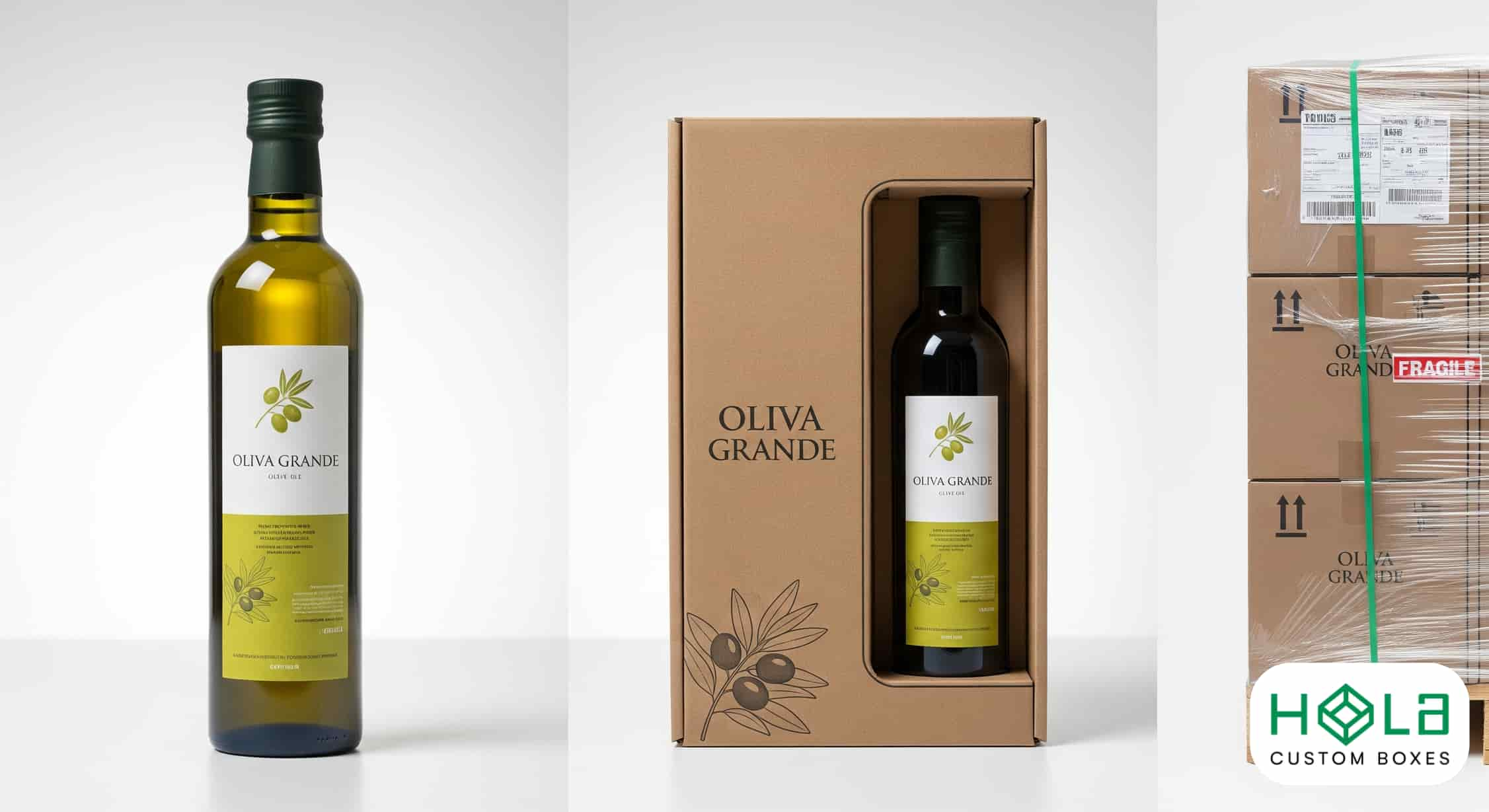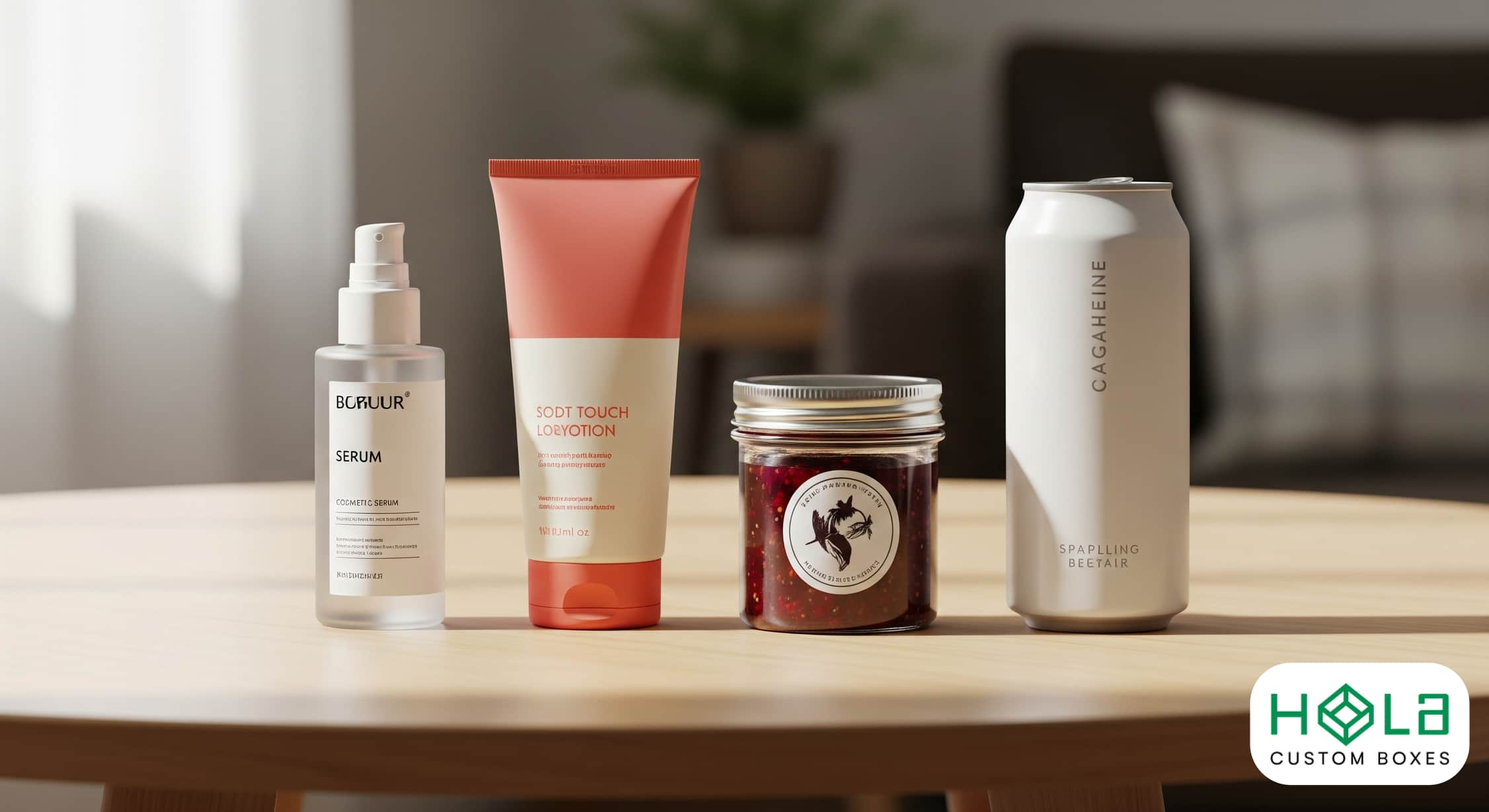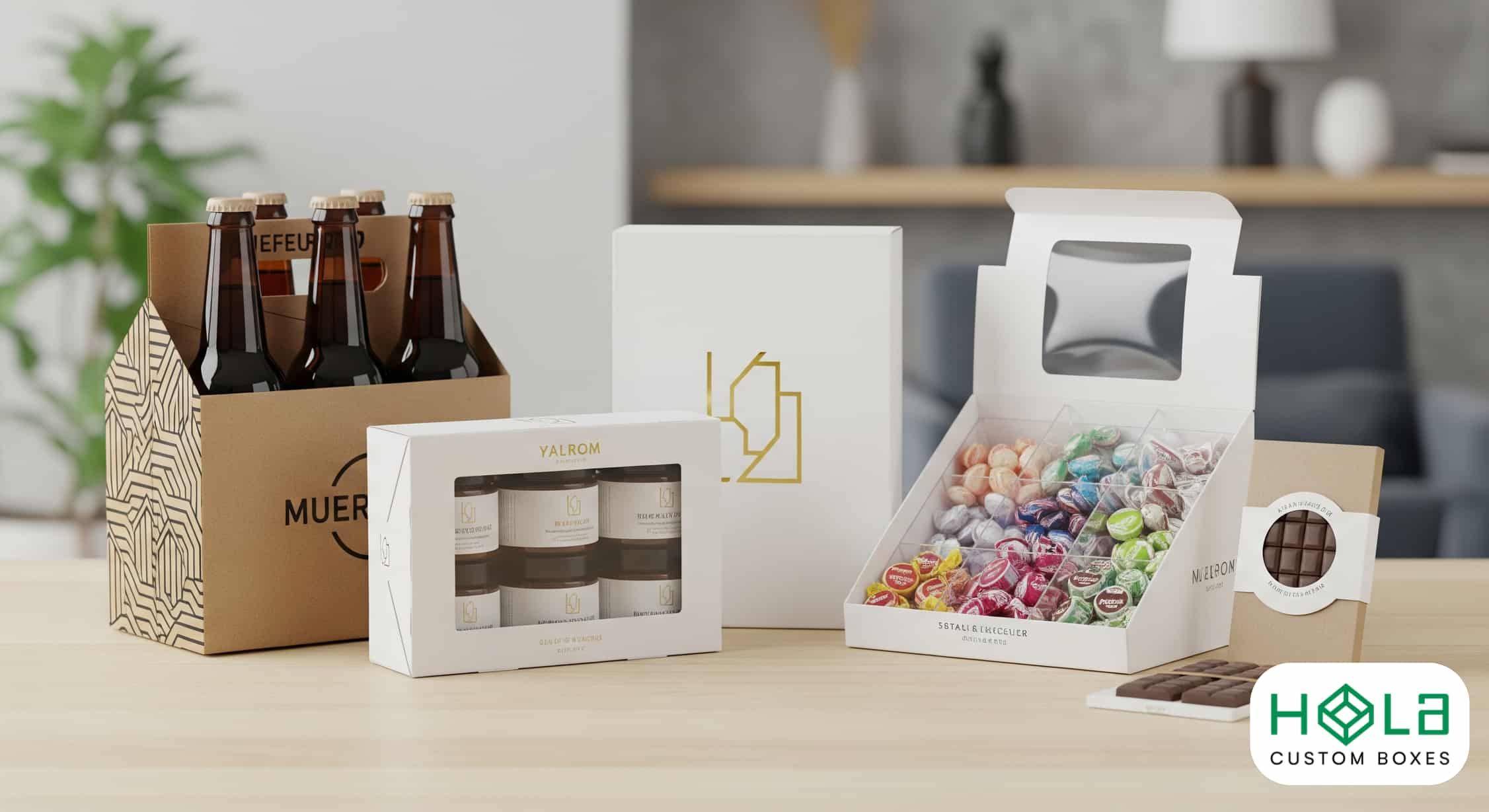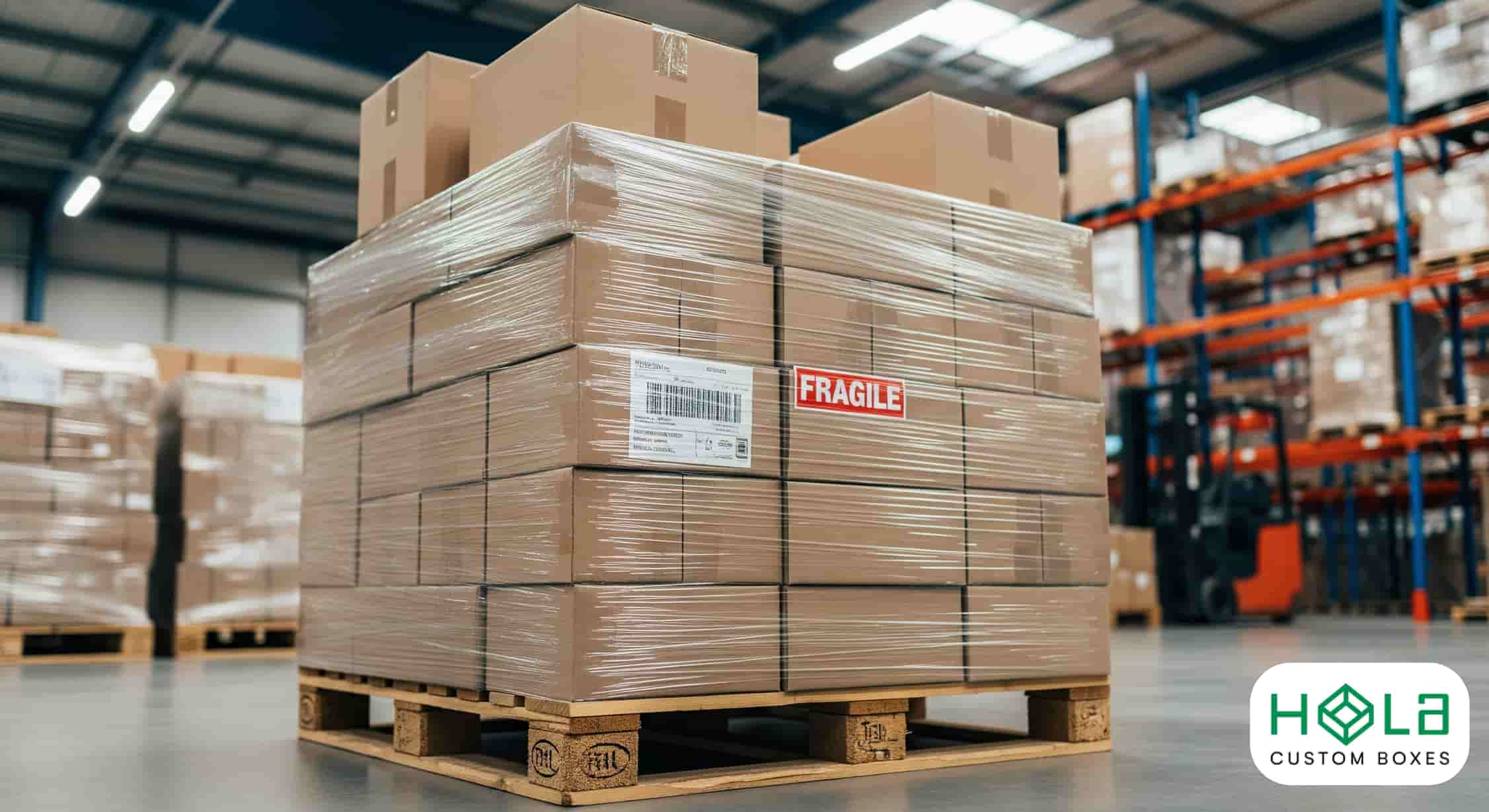What Are the 3 Types of Packaging?
2025-09-13 10:47:47
What Are the 3 Types of Packaging?
The three packaging levels are primary, secondary, and tertiary.
Primary is the immediate container-closure, protecting product quality, enabling dose control, labeling compliance, and eco-friendly material choices.
Secondary unitizes multiple primaries for transport, inventory control, standardized counts, barcoding, and retail branding.
Tertiary consolidates secondary units on pallets, optimizing cube, load containment, and environmental protection with barrier films and dunnage, validated by drop, compression, and vibration tests.
You’ll see how each layer balances performance, sustainability, and regulatory standards next.
Main Points
- The three types of packaging are primary, secondary, and tertiary.
- Primary packaging directly contacts the product, protecting quality and providing consumer information.
- Secondary packaging groups multiple primary units for logistics, branding, and inventory management.
- Tertiary packaging consolidates secondary units for bulk handling, storage, and shipment stability.
- Sustainability and regulatory compliance apply across all three packaging levels.
Primary Packaging

Primary packaging is the immediate container-closure system that directly contacts the product—think HDPE bottles, glass vials, jars, tubes, sachets, and blister packs—designed to protect, preserve, and present the item throughout its shelf life.
You specify primary packaging that protects the product, maintains quality preservation, and provides a validated contamination barrier against oxygen, moisture, and particulates.
You guarantee consumer information—ingredients, usage, warnings—appears legibly and compliantly.
Make it user-friendly with ergonomic openings and dose control. Optimize visual appeal with compliant graphics that influence purchasing decisions.
Select eco-friendly materials and sustainable packaging options without compromising barrier performance, stability, or safety.
Validate according to applicable standards and regulations.
Primary packaging is the box that touches the product—e.g., retail packaging boxes for on-shelf cosmetics or food items.
For projects requiring secondary protection and branded shipping, consider custom corrugated boxes with options like CMYK printing, sustainable materials, and custom inserts to enhance both durability and the unboxing experience.
Secondary Packaging

Architecture beyond the primary pack, secondary packaging is the engineered layer that unitizes multiple immediate containers to protect, handle, and merchandise them through the supply chain.
You specify secondary packaging to deliver protection for primary packages during transportation, optimize logistics, and support inventory management through standardized counts, labels, and barcodes. Cardboard boxes, shrink wrap, and display boxes consolidate SKUs, enhance branding, and drive consumer decisions via visual appeal at shelf. Y
ou balance board grade, burst strength, and print method to meet distribution hazards while preserving retail aesthetics. For rapid prototyping and retail impact, free digital proofs with 2D & 3D views and fast turnarounds on custom display boxes streamline design accuracy and delivery.
Secondary packaging groups items and elevates unboxing—think gift boxes for premium sets.
| Element | Purpose |
|---|---|
| Unitization | Stabilize primary packages |
| Cardboard boxes | Structural containment |
| Shrink/display | Retail-ready visibility |
| Labeling | Traceability, compliance |
| Graphics | Branding, visual appeal |
Tertiary Packaging

The backbone of distribution, tertiary packaging consolidates secondary units for bulk handling, storage, and shipment with maximum stability and protection.
You specify pallets, crates, stretch wrap, and containers to unitize loads for transport and shipping, reducing damage risk and cube. As a manufacturer, you design to standards for pallet patterns, load containment, and forklift interfaces, ensuring compatibility across warehouses.
You mitigate environmental factors—moisture, temperature, vibration—using barrier films, corner boards, and dunnage. For fragile items or hazardous goods, you validate product integrity via drop, compression, and vibration tests.
Effective tertiary packaging streamlines storage density, minimizes handling errors, and delivers consignments intact.
Tertiary packaging focuses on transit; subscription/mailers like custom merch boxes protect goods in shipping.
Frequently Asked Questions
What Are the 3 C's of Packaging?
They’re Communication, Convenience, and Cost-effectiveness.
You design packaging that communicates critical data—labeling, usage, compliance marks, ingredients—to meet regulatory and brand standards.
You prioritize convenience through ergonomic form factors, easy-open/reclose features, portability, and optimized UX across the use cycle.
You guarantee cost-effectiveness by balancing material selection, cube efficiency, protection (drop/ISTA, barrier), and manufacturing/fulfillment costs, while reducing waste and transport emissions.
Together, you align shelf impact, consumer usability, and supply chain performance.
What Are the Three Methods of Packaging?
You use three methods: primary, secondary, and tertiary packaging.
Primary encloses the product, ensuring barrier protection, labeling compliance, and consumer safety per ISO/IEC and FDA/CE requirements.
Secondary aggregates units for shelf presentation, SKU management, and tamper evidence, optimizing cartonization and cube efficiency.
Tertiary stabilizes loads for transit via pallets, stretch wrap, and corner boards, meeting ISTA/ASTM transport testing, ECT/BC standards, and optimizing unit load design, cost, and sustainability KPIs across the supply chain.
What Are the 3 P's of Packaging?
They’re Product, Protection, and Promotion. You align packaging with the product’s form, shelf life, and regulatory constraints, ensuring containment, barrier integrity, and compatibility.
You engineer protection per distribution hazards using ISTA/ASTM test protocols, right-sizing materials, and validating compression, vibration, and drop performance.
You execute promotion through compliant labeling, GS1 barcodes, sustainability marks, and brand-forward graphics that optimize shelf impact and UX.
Integrate LCA data and recyclability to meet EPR and CSR objectives.
What Are the 4 Levels of Packaging?
You’ll reference four levels: primary, secondary, tertiary, and quaternary packaging.
Primary directly contacts the product, guarantees barrier performance, and carries regulatory labeling.
Secondary aggregates units for merchandising and handling, optimizing SKU presentation and barcoding.
Tertiary stabilizes unit loads via pallets, stretch wrap, and cornerboards for distribution per ISTA/ASTM tests.
Quaternary consolidates tertiary loads into intermodal containers or ULDs, streamlining global logistics, cube efficiency, and chain-of-custody compliance.
Choosing between primary, secondary, and tertiary? Browse our retail packaging and gift boxes to match your use case.
block (Recommended Products)
